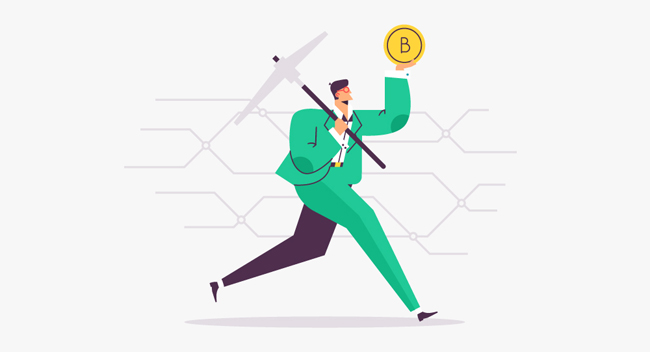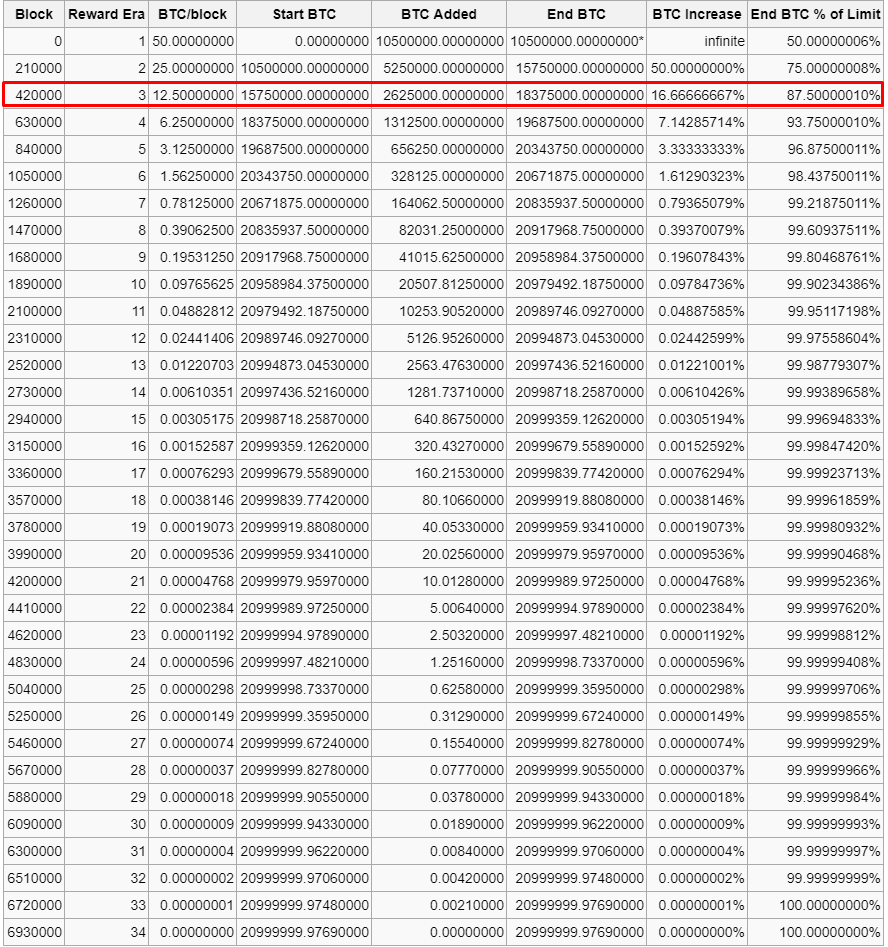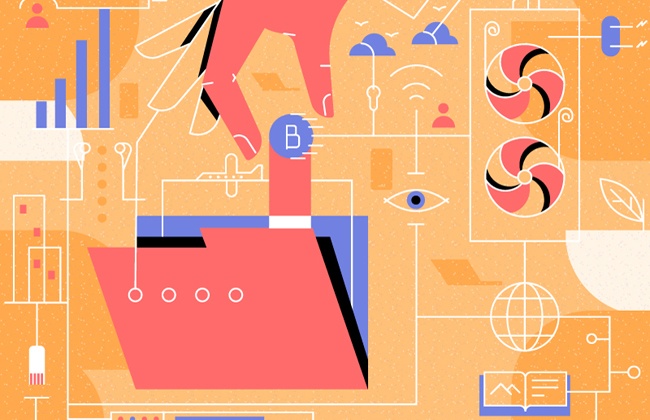2Already 80% of all Bitcoins have been mined (as of January 15, 2018) so let’s see how many Bitcoins are left. The Bitcoin blockchain was designed to only ever produce 21 million Bitcoins. Once all of these are produced and mined there won’t ever be another Bitcoin produced. This is known as controlled supply and is in direct contrast with the way national currencies are handled by central banks.
National, or fiat, currencies have an ever expanding supply. This has several reasons, one of which is that it creates inflation, which global governments encourage as a way to grow the economy. Unfortunately it also leads to the devaluation of the currencies, and in many cases this also leads to a reduction of wealth for citizens.
Bitcoin was created to avoid this devaluation, and is known as a deflationary currency. In fact, Bitcoin is expected to become increasingly valuable as the supply of new coins decreases over time. This happens because Bitcoin was also designed to see mining rewards decrease every 210,000 blocks, or roughly every 4 years.
As Bitcoin is mined, new blocks are found, and miners are rewarded for finding these blocks with more Bitcoin. Originally the reward was 50 Bitcoin. The code for Bitcoin calls for this reward to halve every 210,000 blocks though, so it soon dropped to 25 Bitcoin (in 2012) and then to 12.5 Bitcoin (in 2016). In 2020 it will halve again to 6.25 Bitcoin.
So, while fiat currencies constantly see the central bankers increasing supply, and devaluing the currency, Bitcoin was designed to act in just the opposite fashion. The decreasing supply of Bitcoins created, and the 21 million cap is meant specifically to avoid inflationary pressures.
In truth, there will never be 21 million Bitcoin in circulation as many are lost over time. This happens when hard drives fail, or wallet passwords are lost, or Bitcoin is simply burned on purpose. Some estimates are that as much as 25% of the current supply of Bitcoins are actually lost forever.
A Quick Review of Bitcoin Mining

Image credits:
You may already be familiar with Bitcoin mining and how the blockchain works. If that’s the case you can skip this section. If not, read on for a quick explanation of how Bitcoin mining works.
Bitcoin mining is the process of using computers to solve an algorithmic problem, also called hashing, in order to verify transaction blocks and add them to the Bitcoin blockchain. This is a public ledger of all Bitcoin transactions.
The first thing that happens when a transaction occurs is a broadcast to the entire Bitcoin network so that miners can choose to verify the transactions and add them to the blockchain. This is a vital function, and without miners the entire Bitcoin network would come to a standstill.
Miners are rewarded for their efforts with new Bitcoins, as well as the transaction fees included in the blocks. This compensates the miners for the computing power they use in verifying blocks, and provides an incentive for them to continue mining.
The blockchain reward is from newly created Bitcoins, but the transaction fees are paid by whomever sent the transaction. Network transaction fees can be increased to make certain a transaction is processed as quickly as possible, since the miners will pick up higher fee transactions first.
Bitcoin Mining will End
Based on the halving of rewards every 4 years, the final Bitcoin will be mined in 2140. Already 80% of all Bitcoins have been mined (as of January 15, 2018). Once this happens no more Bitcoins will be created or mined. Contrary to some doomsayers however this doesn’t mean that the entire Bitcoin network will come crashing down. Because the blockchain also provides miners with transaction fees these could replace the mining rewards.
In fact, this switch will become increasingly important long before 2140. As the chart below shows, block rewards will begin to shrink quite rapidly, and even 30-40 years from now will be less than 1/100 of the current reward. This means that within a few decades transaction fees will likely be more important to miners than block rewards.

Bitcoin’s Value Must Continue Rising
If transaction fees for Bitcoin are going to get large enough to continue incentivizing mining the value of Bitcoin will need to rise significantly. Fortunately, Bitcoin was developed with features that encourage that to happen.
When talking about fiat currencies, nearly every single one on the planet has an unlimited and ever growing supply. Governments love increasing money supply to spur growth, but the problem with that is it also devalues the currency, hurting everyday folks like you and I as our purchasing power erodes.
With Bitcoin, the money supply will continue to increase through 2140, but at a slower and slower rate. And since the increased supply is transparent and well known, it isn’t likely to have an inflationary effect.
As a matter of fact, when the last halving of the Bitcoin reward occurred in 2016, we saw Bitcoin’s price almost double in response, which makes sense. Half as many coins as a reward, so double the coin price to compensate.
Bitcoin in the Future

Image credits:
There’s no debating that one day all the Bitcoins will have been mined and all that will be left as income for miners is the transaction fees. The big question is whether or not these will be large enough to keep miners interested in mining Bitcoin.
We can’t really use current mining costs to predict mining profitability 120 years from now. We have no idea how mining technology will change in that time. It’s possible that mining chips will become so small, powerful and cheap that they’ll be in nearly any electronic device. If this were true mining could simply happen in background, maybe in the electronics in your car or even your refrigerator, all without any intervention from you. It’s also possible that energy costs will drop so low that even small fees will remain profitable.
Another potential scenario is that mining fees simply continue to rise to keep pace with the cost of mining. If the entire world is using Bitcoin by the time all Bitcoin has been mined, the demand for the very small supply of 21 million Bitcoin could make transaction fees very high. Think what transaction fees might be if John McAfee is correct and Bitcoin goes to $1 million and beyond.
While it remains a possibility, the probability of transaction fees rising that high seems low at this time. The consensus in the current Bitcoin community is that block size needs to increase to accommodate scalability. And if block size continues to grow transaction fees will remain low.
This might seem troublesome at first glance; if network transaction fees remain low, what will entice miners as blockchain rewards continue shrinking to nothing? The issue is that not increasing the block size is an even greater threat to the network. Once blocks reach their maximum size no more transactions can be confirmed until the next block is created, and this could lead to dropped transactions. We saw how this might happen in December 2018.
While such a scenario would almost surely mean higher fees for miners, it would also discourage people from even using Bitcoin, and this could be a death knell much sooner than any other issue currently facing Bitcoin.
The fixed supply of Bitcoin means block rewards will go away, hopefully creating the opportunity for transaction fees to become just as profitable for miners. This could occur through basic monetary theory. Once all of the Bitcoin has been mined, the fixed 21 million supply has no way to keep up with a growing demand. The discrepancy between supply and demand then could be enough to increase the purchasing power of Bitcoin. If the purchasing power continues to rise it could keep mining profitable no matter what the fees are, as they will be seen as an increasingly valuable asset. Mining would at that point be more like a long-term investment rather than simply a profitable activity.
In Conclusion

Image credits:
As you can see, there are several possible ways for mining Bitcoin to remain profitable and enticing, even after all the new Bitcoins have been mined. I’ve only given a few possibilities. There are likely dozens more scenarios already, and hundreds more based on the evolution of technology in the coming 120 years.
Additionally, the block rewards won’t just disappear overnight, but will slowly decline over time, which gives miners the chance to adapt as the block reward declines and transaction fees become increasingly important.
It’s most likely that mining technology will be one of the most important things keeping miners profitable in the future, although an increase in the purchasing power of Bitcoin is a strong contender as well. The most important thing is that we keep an open mind. Just because we don’t believe something is possible, doesn’t mean that it truly is not possible. Human invention and innovation has solved many far more complex problems throughout history, and as long as Bitcoin remains valuable there will be a way for mining to remain profitable.
Featured image